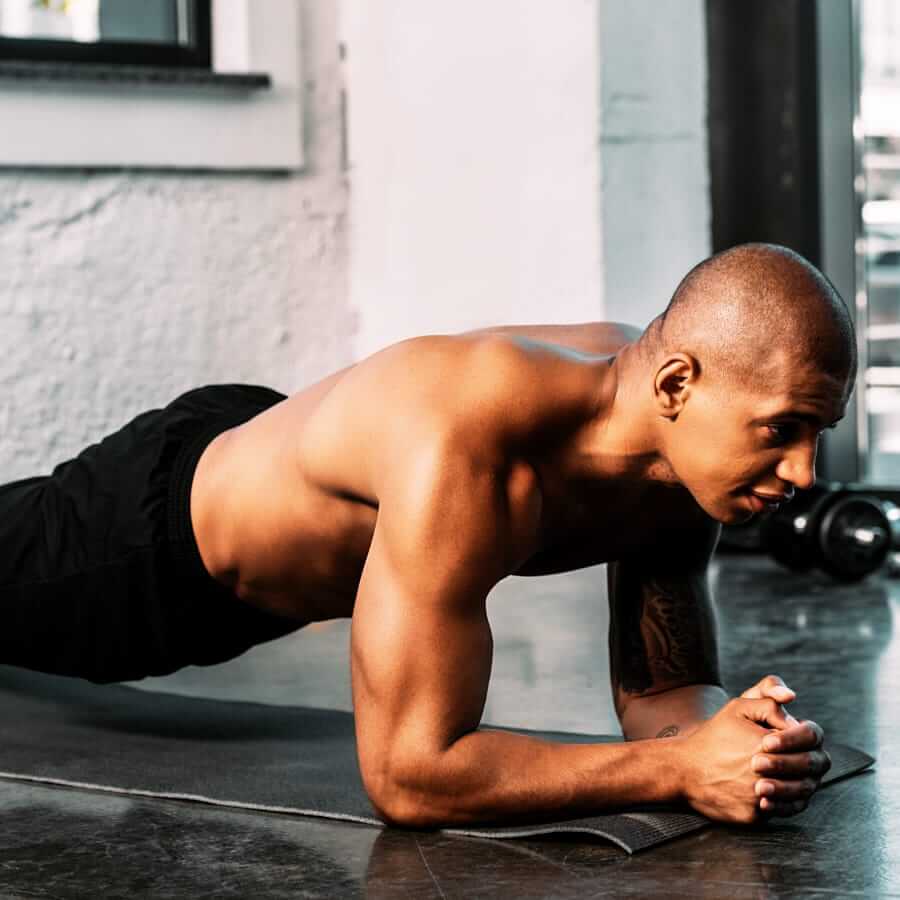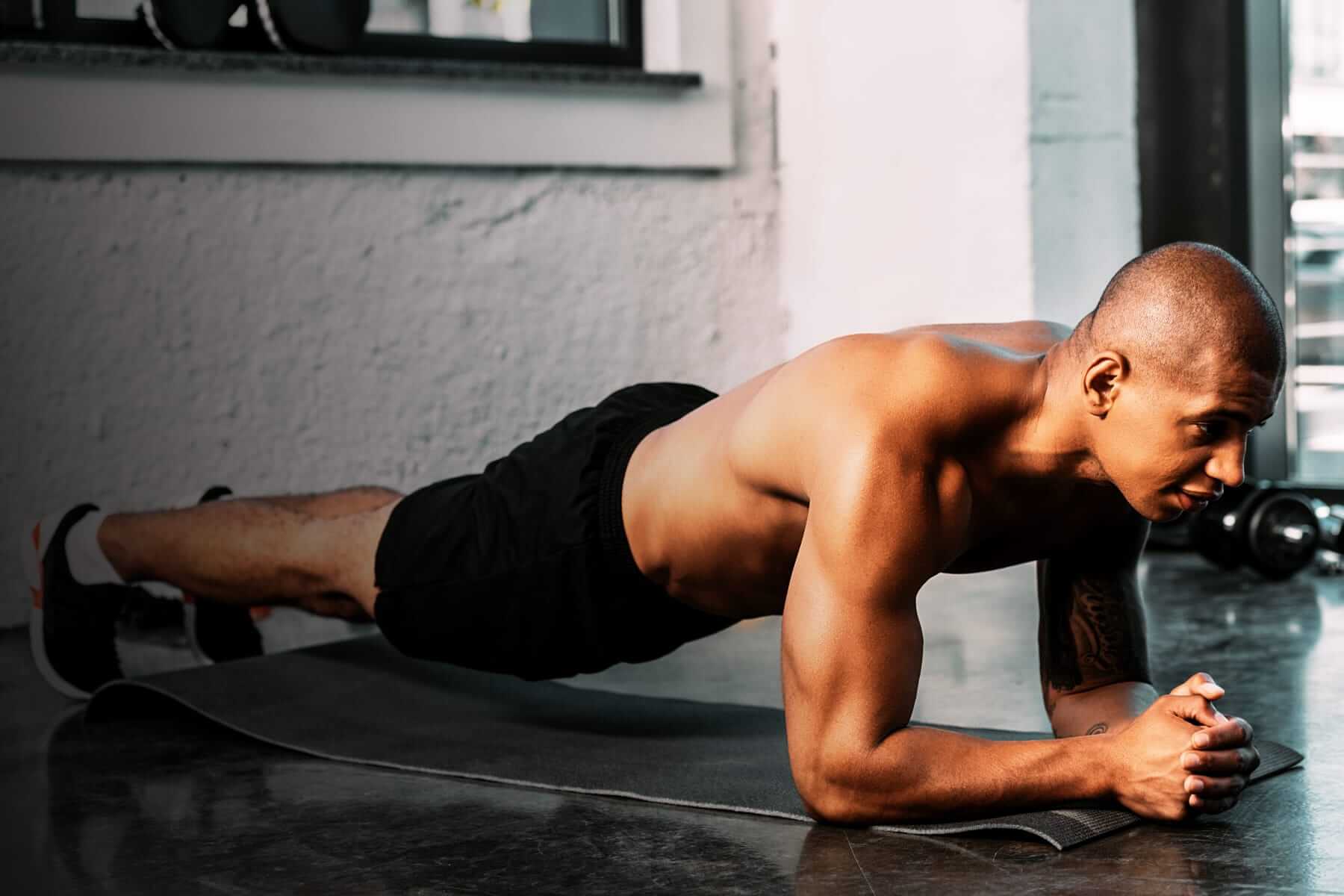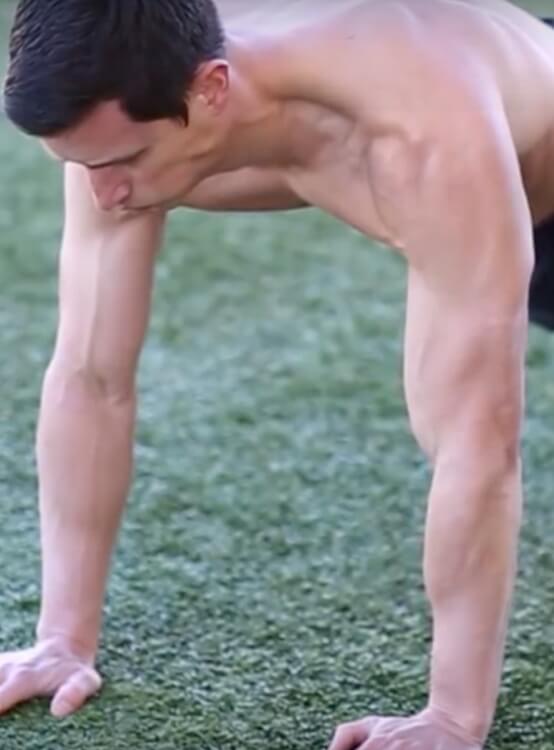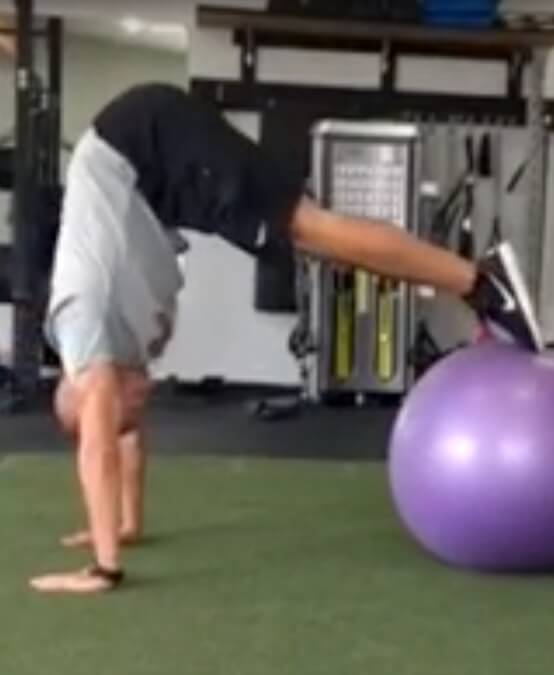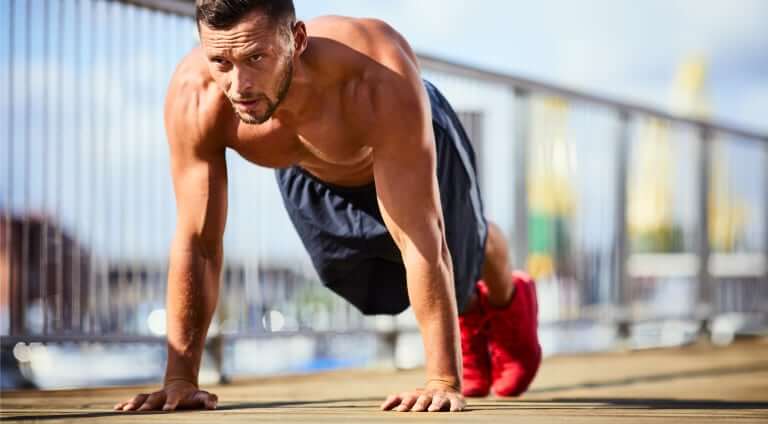Three Moves to
Strengthen Your Core
If you're suffering from one or more of the issues mentioned above, it's important to start addressing the various parts of your core. “Anyone can tack on simple ab exercises at the end of their workout and call it a day,” she says. “But the real benefits of engaging your core comes from doing exercises that matter.”
The Deadlift
The deadlift is a great way to engage your entire core, but it's important to note that it alone shouldn't be your only way to work it. When you do deadlifts, it's really important to have proper form—especially since you can move much more weight with it compared to other exercises.
First, stand with your feet under the barbell and proceed to bend over and grab the bar with about a shoulder-width grip. You'll want to bend your knees until your shins are just about touching the bar before you lift your chest up, at which point you'll straighten your lower back. At this point, you breathe in and stand up with the weight. Sound complicated? That's because it is—the deadlift is a very nuanced movement and it's best to practice light until you really feel that you have it down completely.
The Plank
There are many variations of the plank, from the side plank to the one-arm plank and more. Let's talk about the good old-fashioned regular plank.
To do it, it's really quite simple: plant your hands directly under your shoulders while grounding your toes into the floor and squeezing your glutes. Keep your head looking down at the floor and keep your body straight.
The most common mistakes here are arching your back, lowering your hips, and not keeping one's head in a neutral position (such as looking up). If you're able to avoid these mistakes and regularly incorporate planks into your workouts, you'll definitely benefit. They increase core stability, work your entire core (and really, your entire body; but especially your glutes and hamstrings), and can help with posture.
There are nearly infinite ways to go about planking, from sets of 20-30 seconds to increasingly longer planks where you may hold them for a few minutes.
The Pike Rollout
While we discussed in detail how your core is much more than your abs, you don't want to avoid hitting your abs altogether as they do contribute to total functionality as well. So let's talk about one exercise that doesn't get a lot of attention while being just as effective (if not more) than any other exercise targeting the abs specifically.
The pike rollout targets every bit of your abs and obliques. To start, you'll need an exercise ball. Then, get down on the floor in a plank position with your hands directly below your shoulders. Keep your core contracted and place your shins on top of the Swiss ball behind you. Keeping your legs extended, roll the ball towards you while extending your hips into the air. Contract your abs and then slowly roll the ball back out and your first rep will be complete! You'll notice your shoulders will extend over your head and the ball will roll up your thighs.
